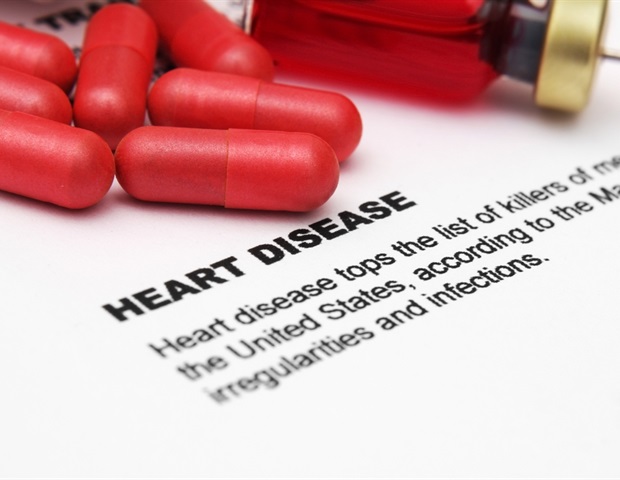
Secondary prevention drugs for cardiovascular illnesses (CVD) are underused globally and extra methods to extend their use are wanted to enhance CVD administration and scale back untimely mortality charges, in accordance with research revealed immediately in JACC, the flagship journal of the American Faculty of Cardiology. The research noticed contributors with CVD from 17 international locations over 12 years and located that medicine use stays low with little enchancment.
Secondary prevention of CVD focuses on stopping additional well being issues in folks already recognized with CVD. This contains managing threat components by life-style modifications, drugs and coverings. With out intervention, these sufferers are at a better threat of loss of life, future coronary heart assaults, strokes and coronary heart failure. Main worldwide organizations, such because the World Well being Group (WHO) and the United Nations (UN), have issued targets over the past decade to cut back untimely mortality from CVD by improved therapies and drugs.
After analyzing the progress of medicine use for secondary cardiovascular (CVD) prevention, our analysis signifies that there continues to be substantial under-utilization of those drugs with little enchancment over time, and that international targets are unlikely to be reached.”
Dr. Philip Joseph, lead creator of the research and scientist on the Inhabitants Well being Analysis Institute (PHRI) – a joint institute of McMaster College and Hamilton Well being Sciences, Canada
The PHRI Potential City Rural Epidemiology (PURE) research, a multi-national, community-based, potential cohort research, analyzed over 11,000 contributors with recognized CVD between 30-70 years of age over 12 years. Individuals had been from communities in international locations at totally different earnings ranges and had been chosen based mostly on standards representing city and rural areas.
Collaborating international locations embody: (earnings stage based mostly on their World Financial institution classification at their time of beginning the research)
- Excessive-income: Canada, Sweden, United Arab Emirates
- Higher-middle-income: Argentina, Brazil, Chile, Malaysia, Poland, South Africa, Türkiye
- Decrease-middle-income: China, Colombia, Iran
- Low-income: Bangladesh, India, Pakistan, Zimbabwe
Analysis outcomes confirmed that medicine use for secondary CVD prevention assorted by nation earnings stage and was decrease on the final research go to in comparison with the primary go to in each earnings stage apart from upper-middle-income international locations.
General, the usage of at the least one medicine for secondary prevention began at 41.3% on the baseline research go to, peaked at 43.1%, and dropped to 31.3% on the final research go to. In high-income international locations, use declined from 88.8% to 77.3%. In upper-middle-income international locations, it rose from 55% to 61.1%. In lower-middle-income international locations, it started at 29.5%, peaked at 31.7%, and fell to 13.4%. In low-income international locations, it elevated from 20.8% to a peak of 47.3%, then declined to 27.5%. Use of three or extra confirmed medicine lessons for secondary prevention was considerably decrease in all nation earnings ranges.
“Our findings recommend that present secondary prevention methods proceed to go away the vast majority of folks with CVD both untreated or undertreated and spotlight the final lack of progress being made to extend the usage of secondary CVD prevention drugs in most components of the world,” Joseph mentioned.
“This landmark research underscores an immense alternative to enhance international cardiovascular well being,” mentioned Harlan M. Krumholz, MD, SM, Harold H. Hines Jr. Professor at Yale College of Medication and Editor-in-Chief of JACC. “It’s unacceptable that so many people worldwide who’ve already skilled coronary heart illness aren’t receiving available and cheap therapies that would save lives and forestall additional occasions. We have now the instruments to bridge this hole in care now-and we should act urgently.”
Limitations of the research embody the evaluation of solely seventeen international locations, though they had been from a broad vary of geographical areas in addition to ranges of financial growth. The potential for contributors to have underestimated their medicine use could have brought about limitations, together with the unknown extent to which modifications in cohort demographics, CVD period or severity impacted variations in medicine use over time. Lastly, the COVID-19 pandemic restricted the flexibility to conduct analysis in some international locations throughout a part of the final comply with up go to cycle.
Supply:
Journal reference:
Joseph, P., et al. (2025). Secondary Prevention Medicines in 17 Nations Grouped by Earnings Degree (PURE): A Potential Cohort Examine. Journal of the American Faculty of Cardiology. doi.org/10.1016/j.jacc.2024.10.121.